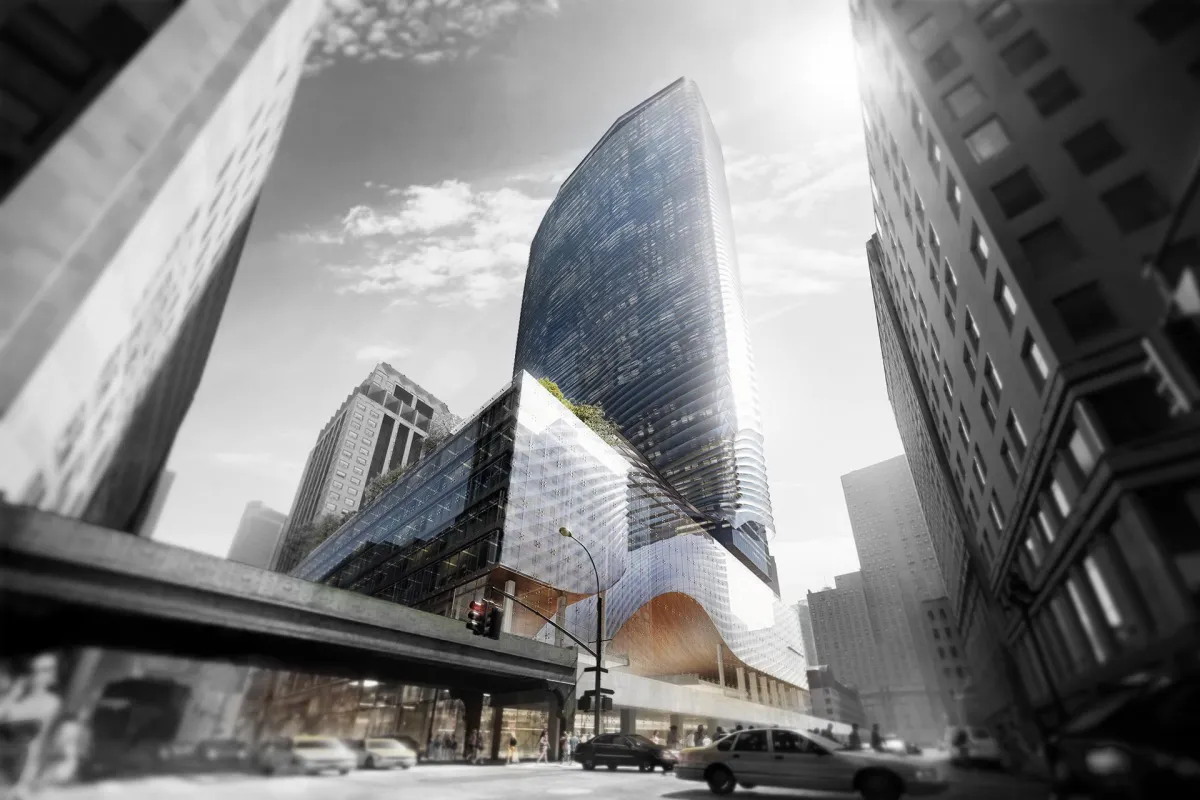
Metlife Tower
New York
Typology: Residential
Size: 24,000 sf
Status: Design
The MetLife design proposal was developed during my time at HKS with the HKS|LINE team for the Metals in Construction competition held by the Ornamental Metal Institute of New York. The proposal centered on design strategies for high-performance facades and sustainability strategies. The final design was the outcome of the research, computational modeling methods, and a self-directed process using analysis and modeling technologies to produce a unique architectural design solution. My role in this project began at the early conceptual stage and ran all the way through the final submission. My role and responsibilities included concept design, conducting research on building facade technologies, performance analysis, and parametric 3D modeling using Grasshopper, Rhino and CATIA.
Introduction
The Metropolitan Life Insurance Company Tower (Met Life Tower) is a 59-story skyscraper located at 200 Park Avenue in Midtown Manhattan, New York. The tower was designed in the international style and completed in 1963 for Pan American World Airways. MetLife purchased the building in 1981 and today remains one of the most prominent skyscrapers in Manhattan. The basis for the proposed retrofitting of the project comes from a need to reinvigorate existing building stock around the city with new life and purpose following strict sustainability goals. The proposed vision for the tower includes a new double-skin façade on the tower and a new public space for a wide range of activities located within the podium. The goal was to introduce a unique contemporary method for solving the challenge of sustainable design while synthesizing the demands of an existing structure in its historic context. The resulting process is driven by computational design methodologies that leverage environmental simulation to provide a generative design influenced by solutions in the art and science of high-performance envelopes.
Challenge
Buildings are the biggest source of emissions and energy consumption both in this country and around the world. Our aspirations to respond to the design brief and guidelines focusing on performance, constructability, and contextual climate response were further influenced by the self-imposed challenge of conducting research into certain topics through the mechanism of the design competition. This solution offers real benefits today that will extend long into the future, because of the inherent flexibility in the system. Rather than focus only on present-case context and rely upon climate data that is 30 years old, we propose a system that is optimized for our projected environment, and that grows from a design process and methodology that allows the rationale to be applied in other unique circumstances. It is an approach that can be generalized as a method and result in unique solutions.
Retrofitting
New York City, for example, has nearly a million buildings in an area of approximately 300 square miles. If the city wants to improve its energy and environmental performance, it will have to concentrate on its building stock. 75% of NYC’s carbon emissions come from its buildings, which is nearly double the national average of about 35%. 45% of the city’s GHGs
come from just 2% percent of its 800,000 properties. By 2030, 85% of NYC’s buildings will have been in existence since 2005.
Climate Analysis
The climate in NYC is humid continental which features significant temperature variations over the year. Both heating and cooling loads are equally important as there is no predominant season. The environmental design strategies need to address both winter and summer extreme temperatures without counter excluding each other. The incident direct solar radiation study during the cooling period indicates the need to minimize exposure to direct solar radiation using external shading devices. The cooling period is defined between July and August. Based on the 2050 projected weather file the cooling period extends from June until September. Direct solar radiation levels remain high during all years indicating a high potential for passive solar heating. An optimized shading system that best responds to both solar protection in summer and passive solar heating in winter is proposed. Natural ventilation techniques take advantage of the noted predominant wind direction during summer by capturing the air from the south and inducing air movement at the building facade.
Energy Performance
The MetLife building ranks at 48 Energy Star score, 23 units lower than the NYC median for office buildings, according to the PlaNYC, New York City Local Law 84 Benchmarking Report of September 2014. Electricity accounts for 65% of the total energy end-use of the building. The thermal energy use of the existing building varies per floor averaging at 73kWh/m2, with 64% of it being the cooling loads alone. The exposure of the building to the external conditions (solar, pollution, wind) is incrementally changing relevant to the floor height. The Useful Daylight Illuminance (UDI) simulation revealed a significant decrease in average daylight penetration at the lower floor levels. Inversely, glare problems are more prevalent on the upper levels as solar exposure increases.
Façade Design & Analysis Far
more effective than a traditional static shading system, these louvers are tuned to provide maximum benefit to each zone of the building, as the louver orientation changes with the orientation of the building facade to best respond to higher southern exposure sun angles and lower east and west sun altitudes. Layered into our systems approach, the depth of the continuous ribbon louver changes based on both solar angles and simulated solar heat gain in the spaces within. Stretched taut across the ribbed louver system is an ETFE skin, which serves to create a double-skin system used to equalize pressure differentials on the façade and leverage the exterior air curtain with the cavity space for the evacuation of warmer air during cooling load periods and supplement intake for heating systems with warmer air during heating periods. The ability to open windows in the tower, once a simple and effective means of micro-control of the user environment, is now again an option, realizing the potential of the dual skin system for promoting airflow through natural convection within the cavity and protecting the occupied spaces from highly variable wind gusts.
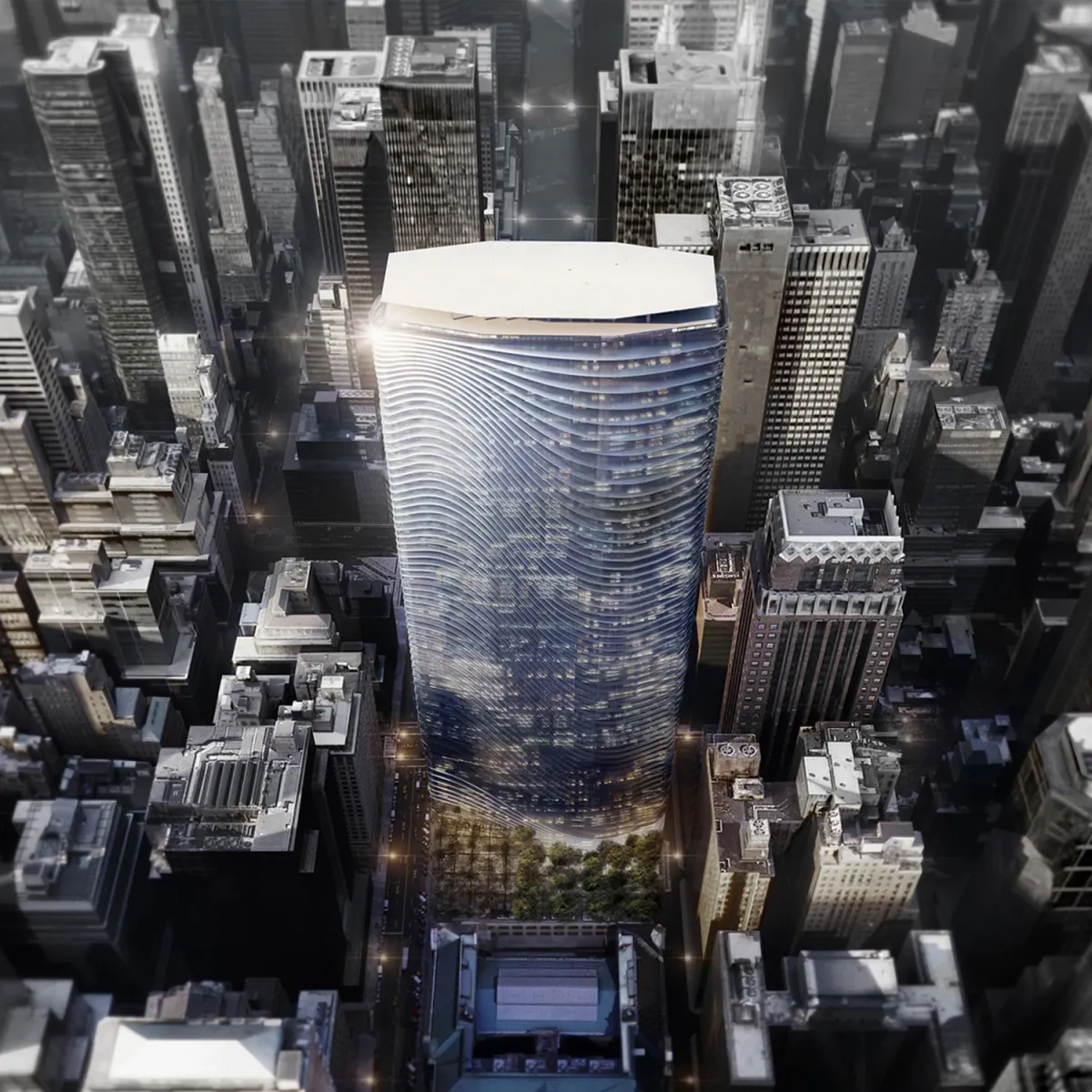
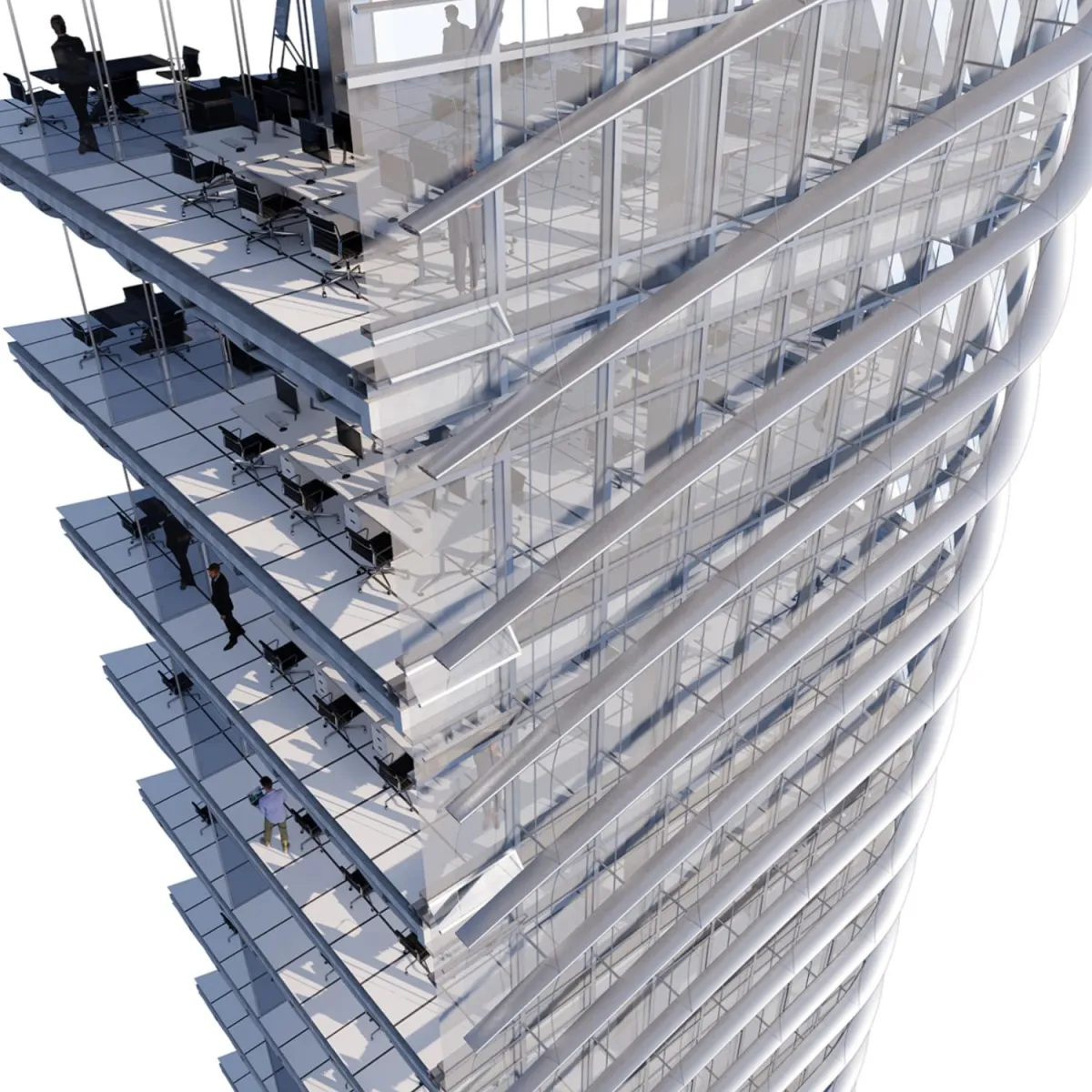
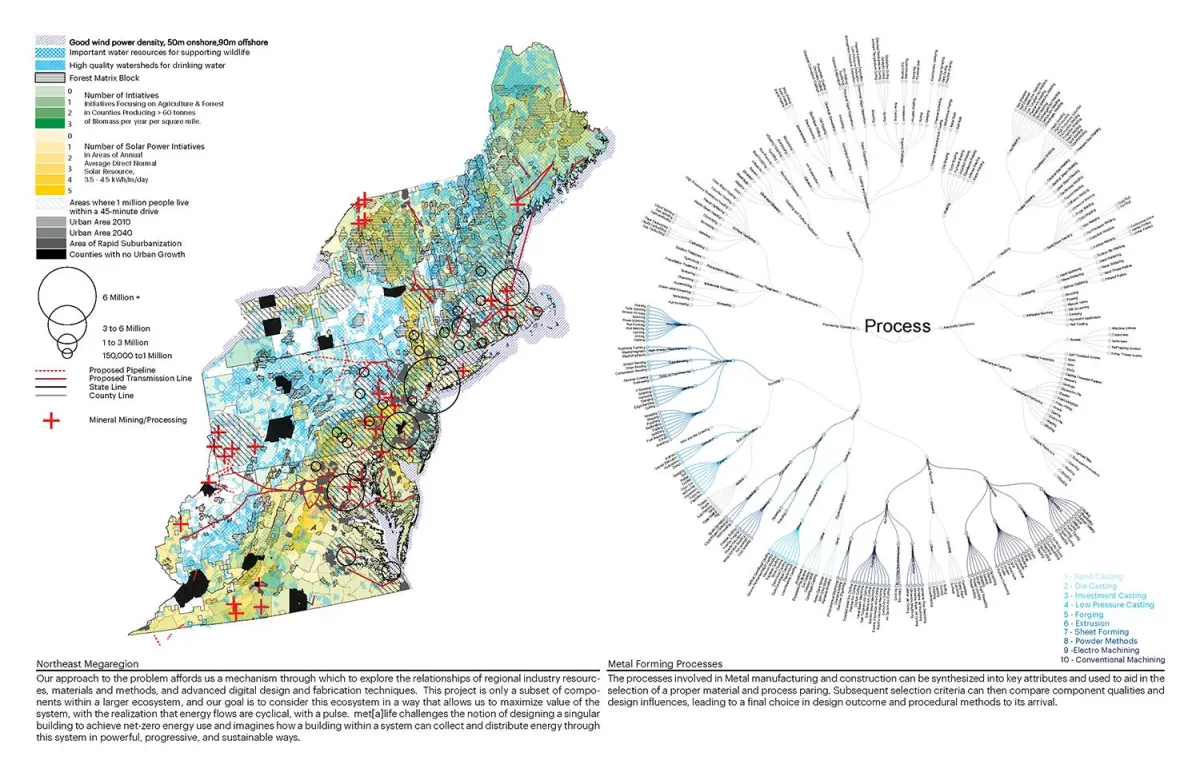
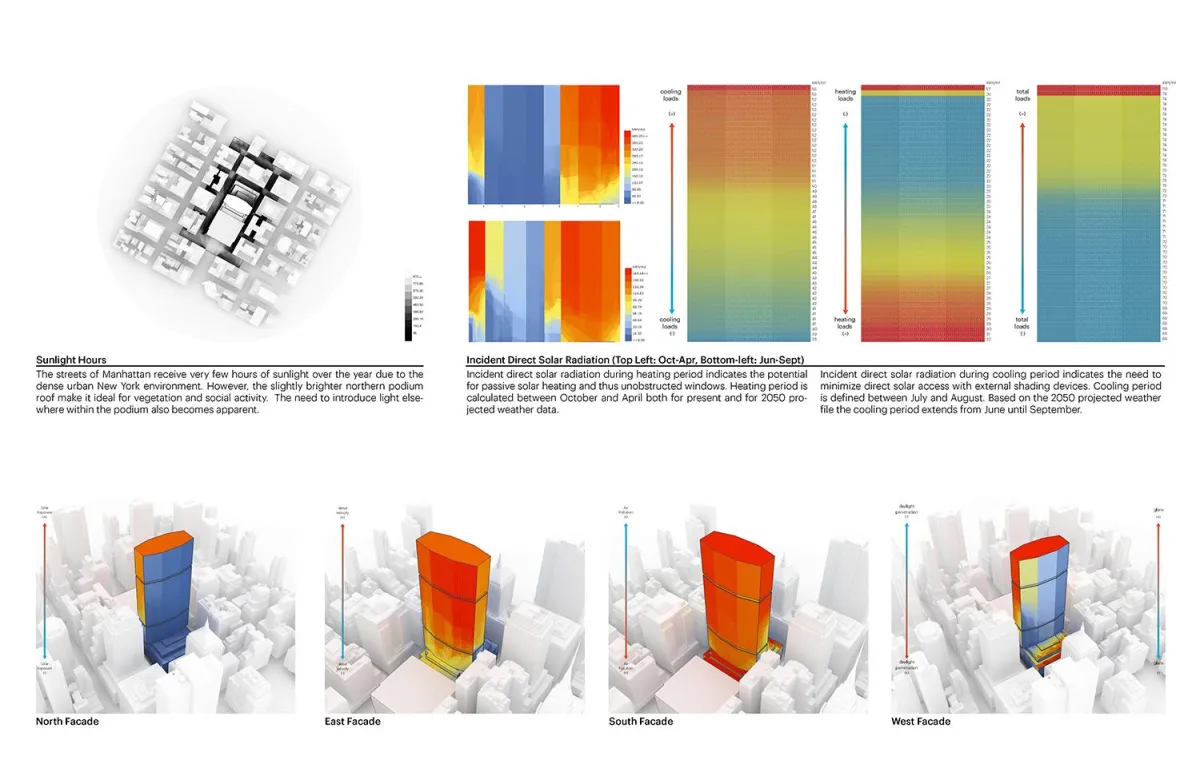
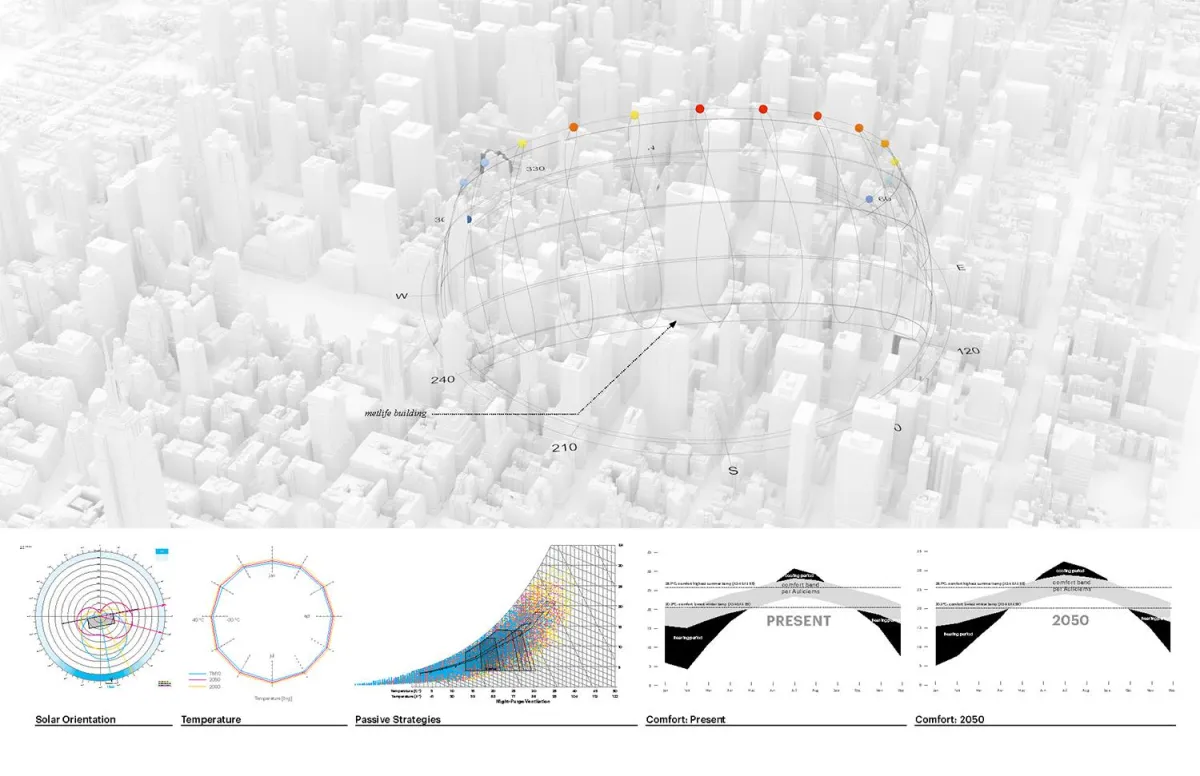
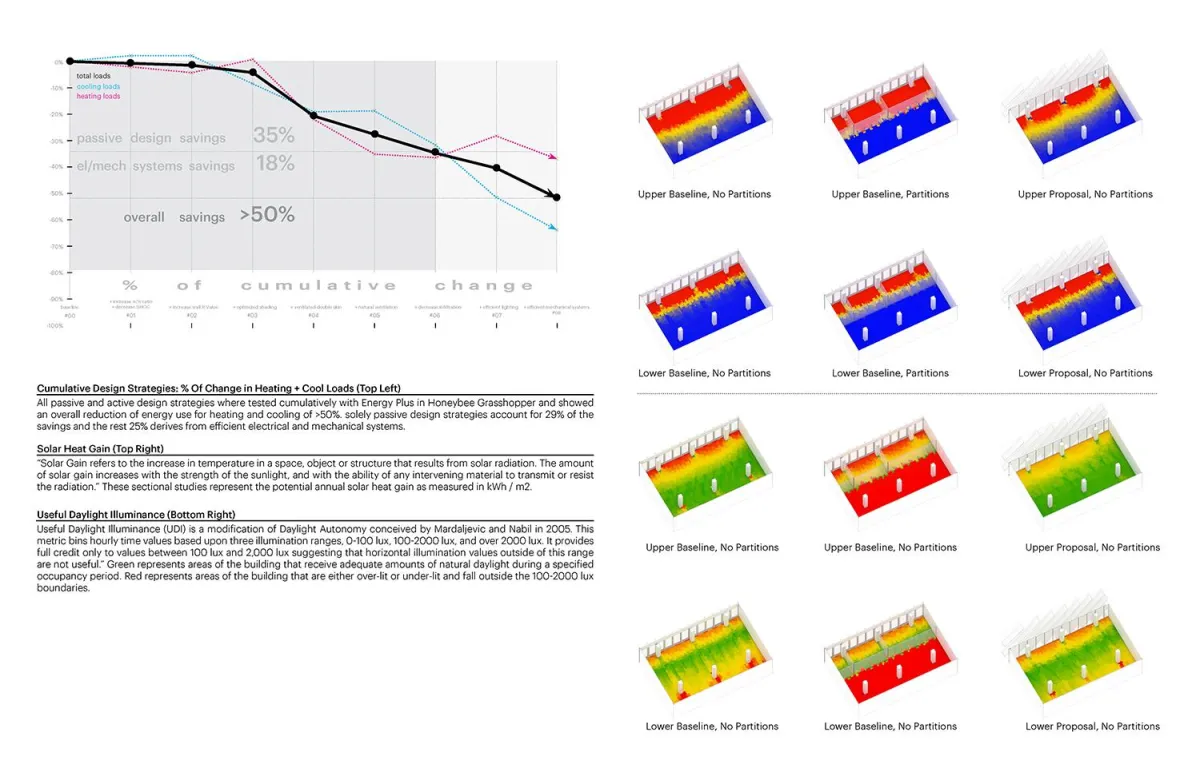
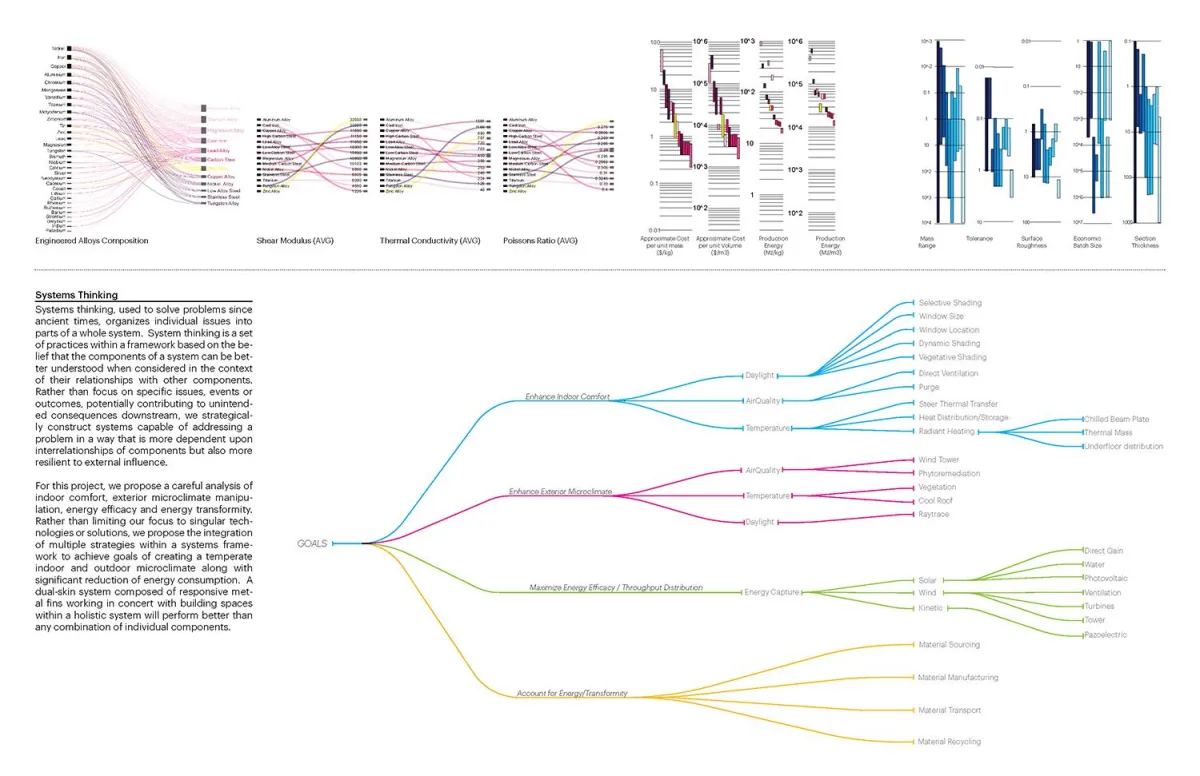
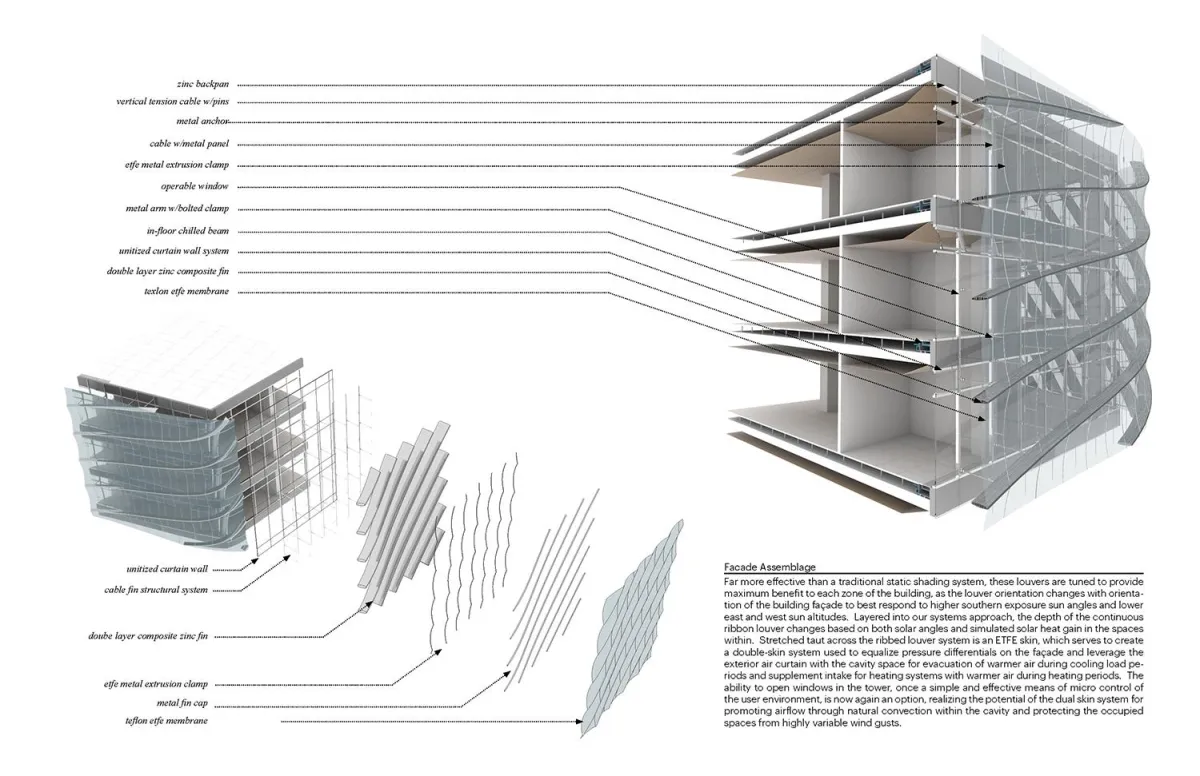
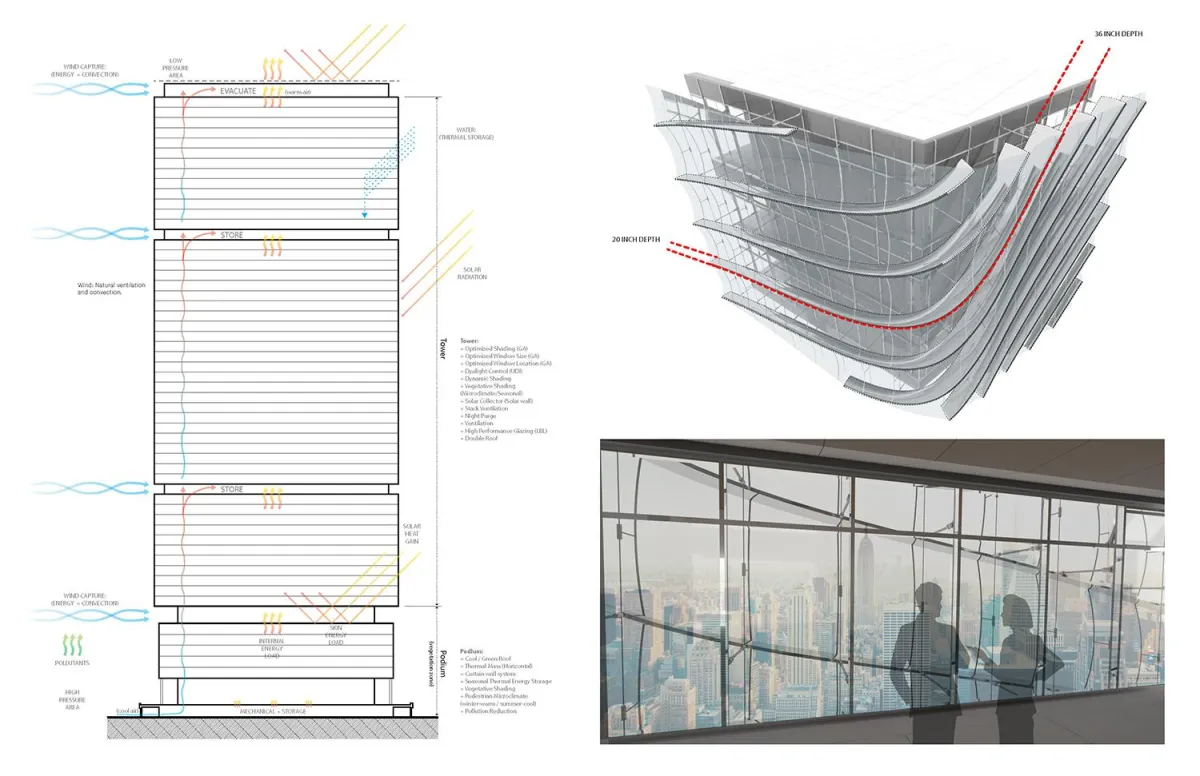
New Project Inquiries
Interested in working with us?
Career Opportunities
Looking for a job opportunity?
Address & Phone
1411 Broadway
New York, NY 10018
+16464666151
Practice Areas
Architecture
Planning
Sustainability
Urban Design
Space Architecture
© 2024, Daniel Inocente Architecture D.P.C. | DIA


